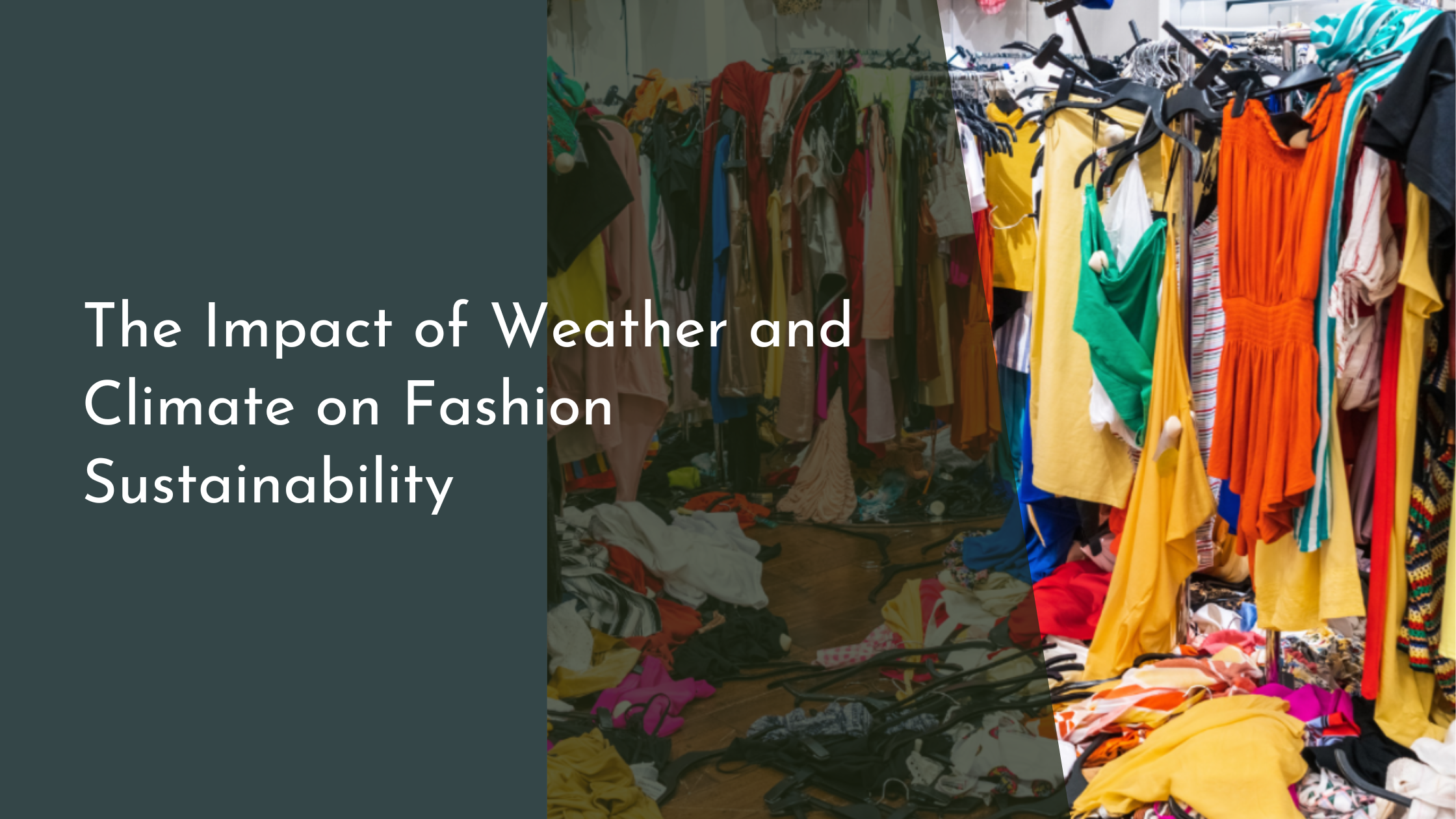The Impact of Weather and Climate on Fashion Sustainability
The world of fashion is as dynamic as the weather itself, with trends that ebb and flow like the changing seasons. As we become more aware of the environmental impact of our choices, the intersection of weather, climate change, and fashion sustainability has become a topic of great interest. This article explores how weather influences fashion, the challenges posed by climate change, the innovative strides in eco-friendly materials, and the importance of embracing sustainable fashion for a greener planet.
Understanding Weather’s Role in Fashion Trends
Weather has always been a significant driver of fashion trends. Seasonal changes dictate not only the fabrics and colors that dominate our wardrobes but also influence the styles and accessories we choose. For instance, as the temperatures drop, fashion turns towards cozy sweaters, layered outfits, and warm accessories like scarves and gloves. Conversely, the arrival of spring brings lighter fabrics, brighter colors, and styles that celebrate the rejuvenating warmth. These seasonal shifts are not merely about comfort; they reflect a deeper, cultural anticipation of change and renewal, which fashion captures beautifully.
Moreover, regional weather patterns also play a crucial role in fashion evolution. Designers often draw inspiration from local climates, leading to collections that resonate with specific environments. In areas with unpredictable weather, fashion tends to favor versatility and adaptability, with pieces that can be layered or accessorized for varying conditions. This interplay between the natural world and human creativity underscores the symbiotic relationship between weather and fashion—a relationship that has crafted our sartorial choices for centuries.
Climate Change: A Challenge for Sustainable Fashion
The fashion industry faces significant challenges as climate change accelerates, altering weather patterns and impacting the natural resources crucial for garment production. Unpredictable weather conditions can disrupt the cultivation of raw materials like cotton, influencing supply chains and driving up costs. This unpredictability also affects the timing and success of harvests, creating a ripple effect that can lead to shortages or surpluses, impacting the environment and economies alike.
Additionally, climate change exacerbates the environmental footprint of fashion. Increased demand for water-intensive crops, reliance on synthetic fibers, and energy consumption from production processes contribute to greenhouse gas emissions. As fashion races to keep up with changing climates, the industry must confront the urgent need to pivot towards sustainable practices that mitigate these impacts. Addressing these challenges requires innovative thinking and a commitment to reducing carbon footprints, while still offering styles that meet consumer demand.
Innovations in Eco-Friendly Fashion Materials
The quest for sustainability has sparked a revolution in the development of eco-friendly fashion materials. Designers and scientists are collaborating to create textiles that reduce environmental impact without compromising on quality or aesthetics. One groundbreaking development is the use of organic and recycled materials such as organic cotton, hemp, and recycled polyester. These materials minimize the use of harmful chemicals, reduce waste, and often use less water and energy in their production processes.
Another exciting innovation is the emergence of biofabricated materials. These are created using living organisms, such as bacteria or fungi, to produce sustainable fibers. Companies are also experimenting with plant-based leathers and textiles derived from agricultural by-products. These innovations represent a significant shift towards a circular economy in fashion, where materials are continuously reused and recycled, reducing the need for virgin resources. Such forward-thinking approaches are crucial for making fashion both stylish and sustainable.
Embracing Sustainable Fashion for a Greener Future
Embracing sustainable fashion is more than a trend; it’s a commitment to a greener future. Consumers are becoming increasingly conscious of the impact their clothing choices have on the environment, leading to a rise in demand for ethical brands and practices. By choosing clothing made from sustainable materials and supporting brands that prioritize fair labor practices, consumers can drive change in the industry. Each purchase becomes a vote for more responsible production methods, encouraging companies to adopt greener technologies and materials.
Furthermore, the fashion industry itself is starting to embrace change. Many brands are setting ambitious sustainability goals, from reducing carbon emissions to eliminating waste. Collaborations with environmental organizations and investments in green technologies are becoming more common. This shift not only helps preserve our planet’s resources but also aligns with the growing consumer desire for transparency and accountability in fashion production. By committing to sustainability, both consumers and the industry can work together to ensure a more environmentally friendly future.
As we navigate the complexities of climate change and its impact on the fashion world, it’s clear that the journey towards sustainability is both a challenge and an opportunity. By understanding the influence of weather on fashion trends, addressing the environmental challenges posed by climate change, and embracing innovative materials, we can create a more sustainable fashion industry. Our choices today will shape the future, and by committing to sustainability, we can enjoy a stylish future that respects and preserves our planet.

